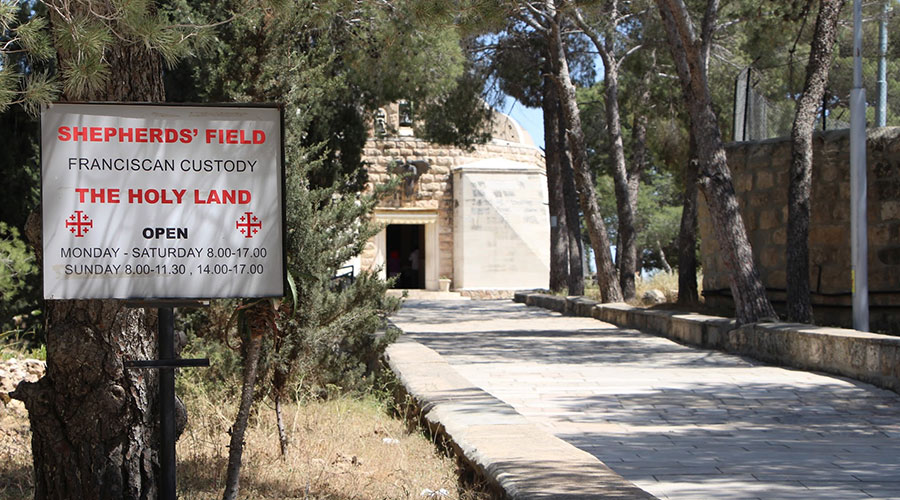This local site, revered by tradition, is known as Der Esiar (meaning ‘sheepfold’). This site lies 1 km (0.6 miles) to the northwest of the Church of Er-Ra’wat. It belongs to the Franciscan Fathers and was carefully excavated, revealing a vast monastic agricultural establishment, cisterns, and grottoes. According to evidence in the field, an early church dating from the fifth century was enlarged in the sixth century, and stones from the octagonal construction of the Basilica of the Nativity were used in the construction of its apse. The most striking of the remains at Der Esiar is a fine, arched cistern still in perfect condition. There are also Byzantine remains of mosaic floors, water channels, wine vats, and the ruins of a group of buildings that suggest a farmstead rather than a specifically monastic establishment.
Nearby, are the remains of a watchtower, known as Eder Tower (Tower of the Flocks), which is now incorporated in the Franciscan hospice. The cave with an altar was traditionally considered as having been inhabited by the shepherds. It is possible that these ruins are from the monastery in which Posidonius lodged in the year 400, beyond the Shepherds’ monastery. Eusebius of Caesarea, bishop, and scholar, writes that the Eder Tower, a thousand paces from Bethlehem, marked the place where the shepherds received the heavenly message. Just below the valley to the north of the Franciscan convent, is a Greek Orthodox building known as Little Mar Sabas, where a monk lives to take care of the surrounding olive groves.

